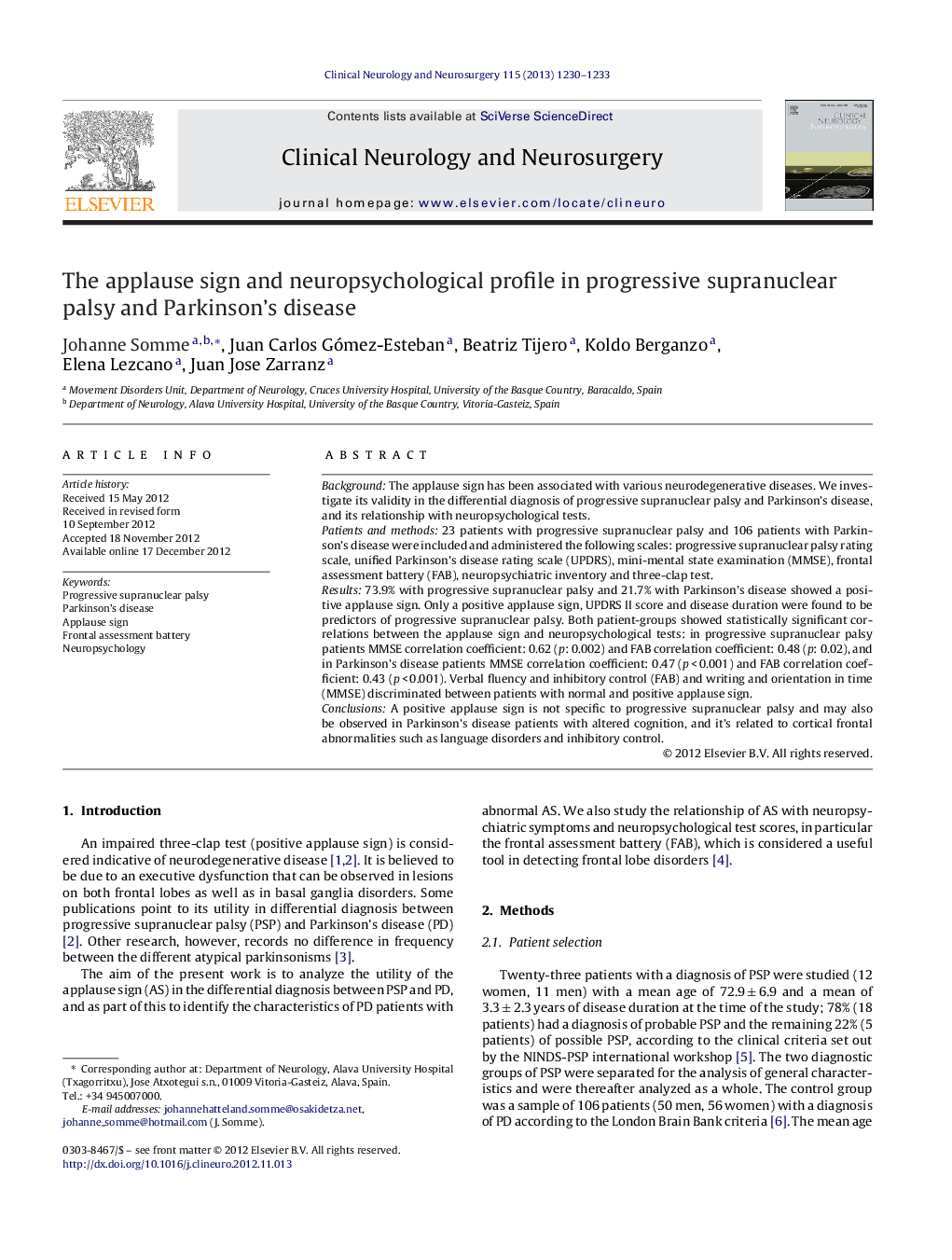| Article ID | Journal | Published Year | Pages | File Type |
|---|---|---|---|---|
| 6006854 | Clinical Neurology and Neurosurgery | 2013 | 4 Pages |
BackgroundThe applause sign has been associated with various neurodegenerative diseases. We investigate its validity in the differential diagnosis of progressive supranuclear palsy and Parkinson's disease, and its relationship with neuropsychological tests.Patients and methods23 patients with progressive supranuclear palsy and 106 patients with Parkinson's disease were included and administered the following scales: progressive supranuclear palsy rating scale, unified Parkinson's disease rating scale (UPDRS), mini-mental state examination (MMSE), frontal assessment battery (FAB), neuropsychiatric inventory and three-clap test.Results73.9% with progressive supranuclear palsy and 21.7% with Parkinson's disease showed a positive applause sign. Only a positive applause sign, UPDRS II score and disease duration were found to be predictors of progressive supranuclear palsy. Both patient-groups showed statistically significant correlations between the applause sign and neuropsychological tests: in progressive supranuclear palsy patients MMSE correlation coefficient: 0.62 (p: 0.002) and FAB correlation coefficient: 0.48 (p: 0.02), and in Parkinson's disease patients MMSE correlation coefficient: 0.47 (p < 0.001) and FAB correlation coefficient: 0.43 (p < 0.001). Verbal fluency and inhibitory control (FAB) and writing and orientation in time (MMSE) discriminated between patients with normal and positive applause sign.ConclusionsA positive applause sign is not specific to progressive supranuclear palsy and may also be observed in Parkinson's disease patients with altered cognition, and it's related to cortical frontal abnormalities such as language disorders and inhibitory control.
